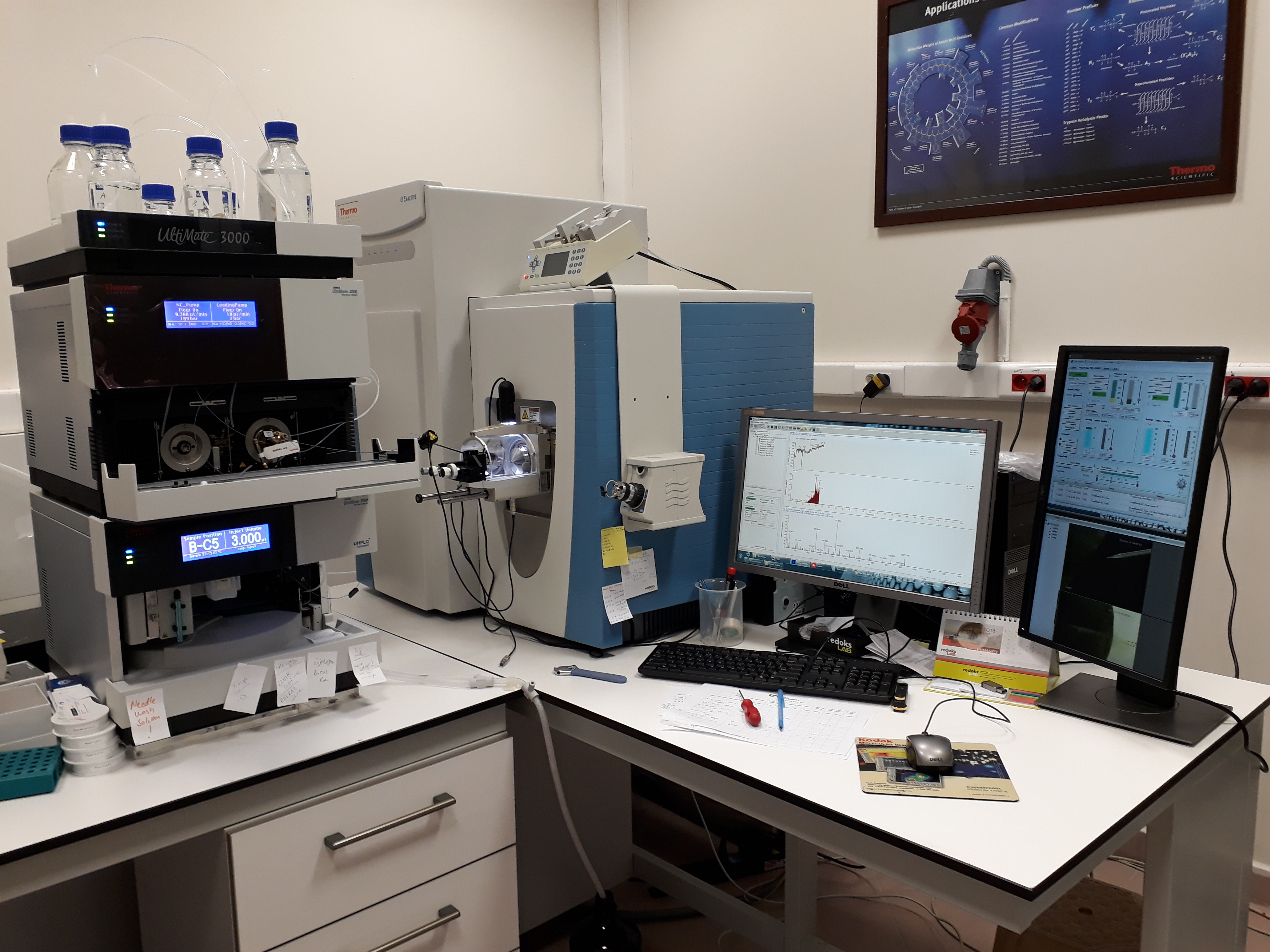
Welcome to the Koç University Proteomics Facility (KUPAM)
The Koç University ProFac service offers high-throughput protein analysis of complex biological samples such as cells, tissue specimen or body liquids. Our center was founded in 2013 and uses state-of-the-art proteomics techniques for protein identification and quantification.
The widely followed proteomics workflow is the bottom-up approach which is characterized by sample analysis on the peptide level and subsequent in-silico assignment of peptide sequences to corresponding proteins using spectral databases. A schematic overview is depicted in the picture below. The first step includes protein extraction from send-in biological samples and modification of isolated proteins by using denaturing, reducing and alkylating agents. Depending on experimental conditions the modified proteins are in-gel, in-solution or on-bead digested. Peptide identification and quantification is performed on a liquid chromatography-coupled tandem mass spectrometer (QExactive, Thermo Scientific).



Important points to consider before sending your samples for Proteomics Analysis
If you wish to send samples for MS analysis please fill out the query form in the provided link. If you have questions or would like to have price information please send an email to proteomics@ku.edu.tr.
